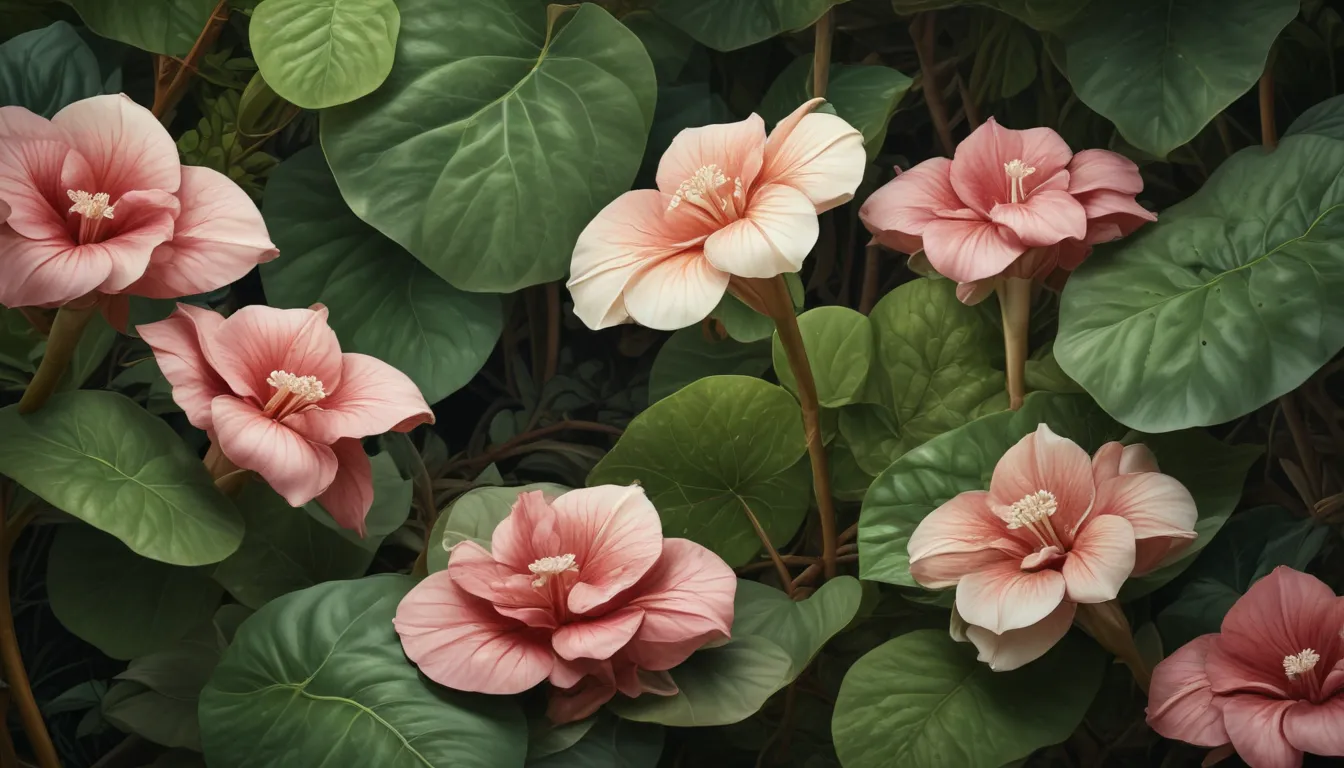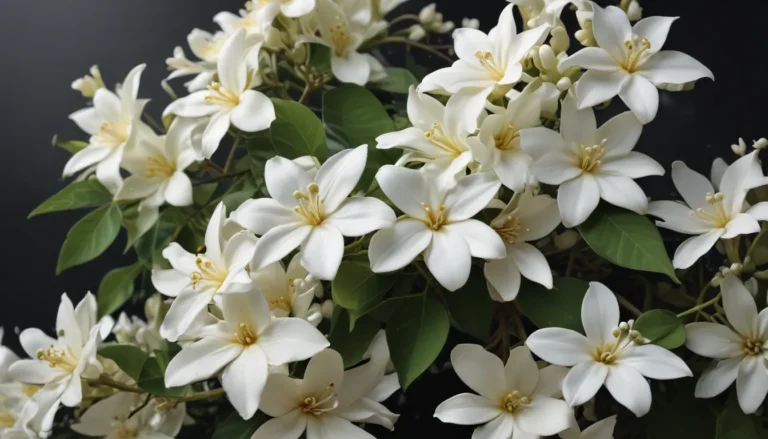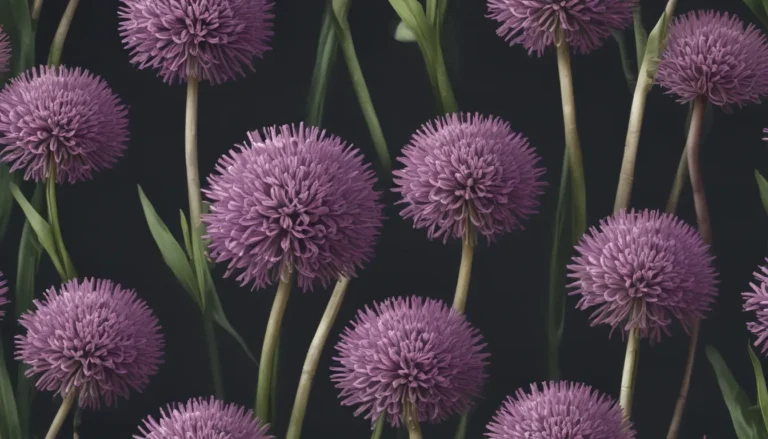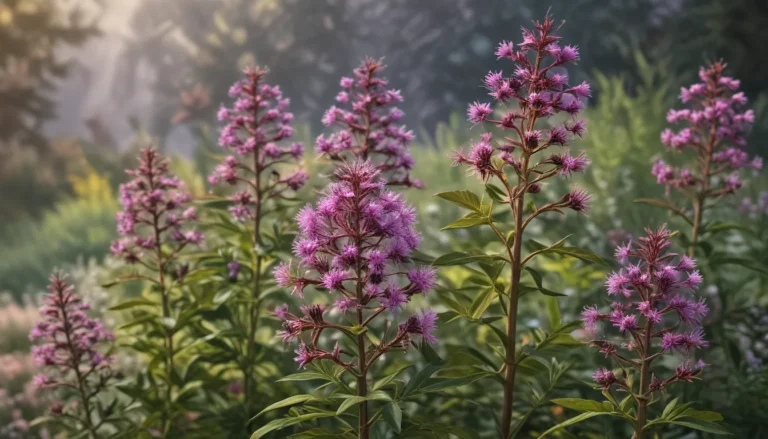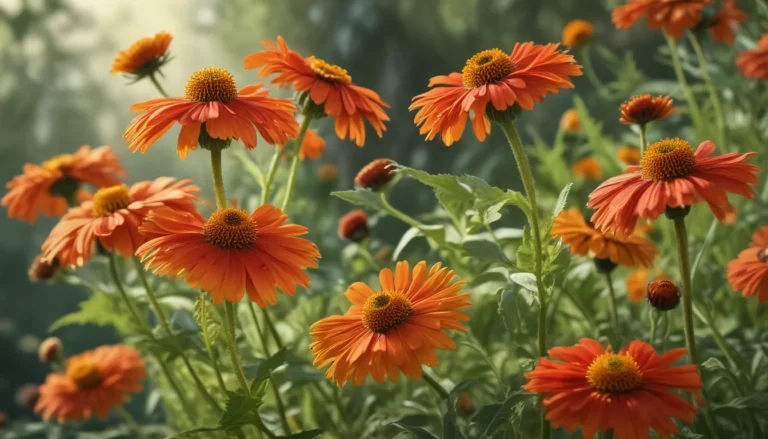The pictures we use in our articles might not show exactly what the words say. We choose these pictures to make you interested in reading more. The pictures work together with the words but don’t take their place. The words still tell you the important facts.
Wild ginger, also known as Asarum, is a captivating plant that has intrigued herbalists, botanists, and nature enthusiasts for centuries. This elusive and enigmatic herb can be found in various regions across the globe, including North America, Europe, and Asia. Join us on a journey as we delve into 13 intriguing facts about wild ginger that will leave you in awe of this remarkable plant. From its medicinal properties to its role in folklore and its unique adaptations, wild ginger is truly a plant that deserves our attention and admiration.
Exploring the Enchanting World of Wild Ginger
Wild ginger, a distinct plant from culinary ginger, thrives in shady forests, emitting a delightful spicy aroma that sets it apart from other plants in its habitat. Its medicinal properties and vital role in forest ecosystems make it a fascinating subject for study. With unique flowering mechanisms and a diverse range of species, wild ginger adds an air of mystery and intrigue to the forest floor. Let's uncover the hidden wonders of this beloved herb.
The Enigmatic Name of Wild Ginger
Wild ginger, scientifically known as Asarum, derives its enigmatic name from its ginger-like rhizomes. Despite its name, wild ginger is not botanically related to the culinary ginger commonly used in cooking. This misleading moniker adds to the plant's mystique and allure.
A Hidden Gem of the Forest
Wild ginger is a perennial herbaceous plant that thrives in the damp, shady environments of North America, Europe, and Asia. Often hidden beneath the dense canopy of the forest, wild ginger exudes an air of mystery and enchantment. Its presence adds a touch of magic to the woodland landscape.
The Aromatic Delight of Wild Ginger
The leaves and rhizomes of wild ginger emit a fragrant aroma reminiscent of spicy ginger and black pepper, captivating the senses of those who encounter it. Native American tribes valued wild ginger for its aromatic qualities and incorporated it into traditional medicinal practices, recognizing its unique properties.
Unveiling the Unique Flowering Mechanism
Wild ginger displays a fascinating approach to flowering. Instead of showy blossoms, it produces inconspicuous flowers that hide beneath the plant's leaves. Ants play a crucial role in pollinating these modest blooms, highlighting the intricate relationship between wild ginger and its environment.
Unraveling the Medicinal Marvel of Wild Ginger
Wild ginger boasts a long history of medicinal usage, renowned for its anti-inflammatory, antimicrobial, and digestive properties. It has been employed to alleviate various ailments, such as colds, rheumatism, and digestive disorders. The therapeutic potential of wild ginger continues to intrigue herbalists and health enthusiasts.
A Cautionary Note on Culinary Uses
While wild ginger possesses a distinct flavor profile, it is not recommended for culinary use due to potential toxicity in large quantities. However, its subtle aromatic qualities have been sparingly utilized to enhance the flavor of select dishes and beverages, adding a touch of intrigue to culinary creations.
Celebrating the Ecological Importance
Wild ginger plays a vital role in forest ecosystems, offering shelter and sustenance to a diverse array of wildlife species. Its leaves serve as a host plant for the larvae of specific butterflies, contributing to the richness of biodiversity within the habitat. The ecological significance of wild ginger highlights its integral role in sustaining the natural world.
Revered by Native Americans
Native American tribes held wild ginger in high esteem for its medicinal properties and spiritual significance. This revered plant was utilized in rituals, ceremonies, and herbal remedies, reflecting its deep-rooted connection to indigenous cultures and traditions. Wild ginger remains a symbol of cultural heritage and reverence.
Nature’s Wildlife Repellent
The aromatic compounds present in wild ginger act as a natural repellent, deterring pests and herbivores from consuming the plant. This defense mechanism aids in protecting wild ginger from grazing animals, promoting its survival in its natural habitat. Nature's ingenious strategies are showcased through the intricate adaptations of wild ginger.
The Allure of Wild Ginger Leaves
While the rhizomes of wild ginger possess aromatic and medicinal properties, it is the heart-shaped leaves that steal the spotlight. Their glossy appearance and intricate veining patterns make wild ginger a visually captivating plant, adding a touch of elegance to woodland landscapes. The unique foliage of wild ginger showcases nature's artistic craftsmanship.
Embracing the Diversity of Species
The Asarum genus comprises approximately 85 species of wild ginger, each showcasing distinctive characteristics and geographical distribution. This diverse array of species highlights the richness and complexity within the genus, offering a plethora of variations for botanical enthusiasts to explore and appreciate.
Cultivating Wild Ginger in Gardens
Due to its attractive foliage and ability to thrive in shaded environments, certain species of wild ginger, such as Asarum europaeum and Asarum canadense, are popular choices for garden landscaping. Their ornamental appeal and adaptability make them ideal additions to shade gardens and woodland settings, enhancing the beauty of outdoor spaces.
Delving into Herbal Lore and Folklore
Wild ginger has a long history of folklore and is entwined with various myths and legends. It has been believed to possess protective qualities, warding off evil spirits and bringing good fortune to those who encounter it. The rich tapestry of herbal lore surrounding wild ginger adds a layer of mysticism and intrigue to its story.
In conclusion, wild ginger stands as a plant of tremendous fascination and botanical significance. Its enigmatic nature, coupled with its medicinal and ecological importance, makes it a subject worthy of admiration and exploration. Whether you are a seasoned herbalist or a curious nature enthusiast, the allure of wild ginger beckons you to appreciate the wonders of the natural world. Let the mysteries of this captivating plant inspire you to delve deeper into the realms of botanical beauty and ecological harmony.
FAQs: Unveiling the Secrets of Wild Ginger
Q: What is wild ginger?
A: Wild ginger, also known as Asarum, is a perennial herbaceous plant native to Asia, North America, and Europe.
Q: How does wild ginger look?
A: Wild ginger features heart-shaped, glossy leaves that grow in clusters, along with unique bell-shaped flowers hidden beneath the foliage.
Q: Can wild ginger be grown in gardens?
A: Yes, wild ginger is suitable for shade gardens and woodland settings, thriving in moist, well-draining soil and partial to full shade.
Q: Is wild ginger used in cooking?
A: While the rhizomes of wild ginger have a spicy, aromatic flavor, they are not commonly used in culinary applications due to potential toxicity.
Q: What are the traditional medicinal uses of wild ginger?
A: Wild ginger has been utilized in traditional medicine to address digestive issues, respiratory problems, and inflammation. Consulting a healthcare professional is advisable before using it medicinally.
Q: Are there any toxic properties associated with wild ginger?
A: Some species of wild ginger contain aristolochic acid, which can be toxic if consumed excessively. Proper identification and moderate use are essential.
Q: How does wild ginger propagate?
A: Wild ginger primarily spreads through rhizomes, although propagation via seeds is also possible, albeit less common.
Q: Does wild ginger attract wildlife?
A: Yes, wild ginger is known to attract pollinators like bees and flies, as well as serve as a food source for certain wildlife species such as deer and rabbits.
Q: Can wild ginger be grown indoors?
A: While wild ginger thrives outdoors, it can be cultivated indoors in containers with ample shade and consistent moisture.
Q: How long does wild ginger live?
A: Wild ginger is a long-lived plant, with some species enduring for up to 20 years or more, showcasing its resilience in the natural environment.
Q: Are there any cultural or symbolic meanings associated with wild ginger?
A: In certain cultures, wild ginger symbolizes protection, good luck, healing, and spiritual purification, reflecting its multifaceted significance.
Q: Can wild ginger be used in landscaping?
A: Yes, wild ginger's attractive foliage and shade tolerance make it a popular choice for landscaping projects, adding beauty and diversity to outdoor spaces.
Q: How can I incorporate wild ginger into my garden?
A: Wild ginger can be utilized as ground cover in shaded areas or as an accent plant in woodland gardens, complementing other shade-loving flora like ferns and hostas.
Our commitment to delivering trustworthy and engaging content is unwavering, rooted in our dedication to providing accurate and insightful information. Each fact on our site is contributed by real users, enriching our platform with diverse insights and knowledge. Our diligent editors meticulously review each submission to ensure the highest standards of accuracy and authenticity. As you journey through the fascinating realm of botanical wonders with us, rest assured that you are exploring a tapestry of facts that are not only captivating but also credible. Trust in our pursuit of quality and authenticity as you embrace the marvels of nature and botanical diversity.
By immersing yourself in the enigmatic world of wild ginger, you embark on a profound exploration of nature's intricate beauty and ecological significance. Let the allure of this captivating plant spark your curiosity and appreciation for the wonders that abound in the natural world. Embrace the mysteries of wild ginger as they unfold before you, revealing a tapestry of botanical brilliance and enchanting secrets waiting to be discovered.
